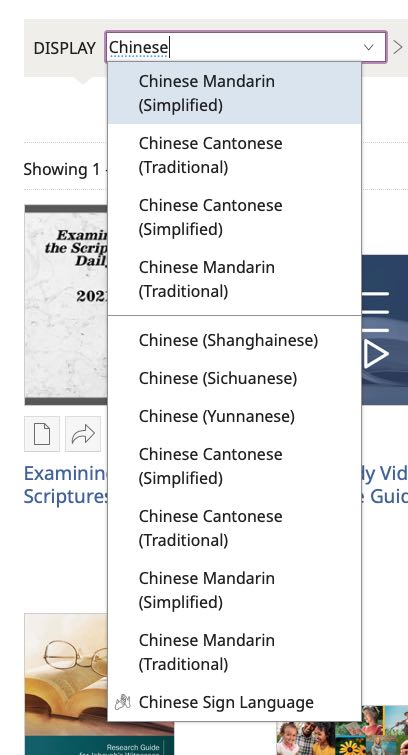yǔxì (yǔ·xì language · {tied (things) → [system; family]} 语系 語系) ← Tap/click to show/hide the “flashcard”
Last week’s MEotW post mentioned that English and Spanish are generally considered by modern linguists to be in the Indo-European language family. This concept of a language family is used in modern linguistic genealogical (or genetic) language classification:
A language family is a group of languages related through descent from a common ancestral language or parental language, called the proto-language of that family. The term “family” reflects the tree model of language origination in historical linguistics, which makes use of a metaphor comparing languages to people in a biological family tree…Linguists therefore describe the daughter languages within a language family as being genetically related.[source]
The Mandarin Translation
As confirmed by American sinologist and University of Pennsylvania Professor of East Asian Languages and Civilizations Victor H. Mair in his article “The Classification of Sinitic Languages: What Is ‘Chinese’?” (p. 747), an accepted and acceptable Mandarin translation for “language family” is “yǔxì (yǔ·xì language · {tied (things) → [system; family]} 语系 語系)”, this week’s MEotW.
The “yǔ (language; speech | saying; proverb | words; expression | speak; say 语 語)” in “yǔxì (yǔ·xì language · {tied (things) → [system; family]} 语系 語系)” means “language”, particularly, the speech of a language, which modern linguists (language scientists) recognize to be the primary aspect of a language.
“Xì ({tied [(things)]} [→ [system; series | family]] 系)”, as used in “yǔxì (yǔ·xì language · {tied (things) → [system; family]} 语系 語系)”, literally means “tied [(things)]”, and effectively means “system”, “series”, or “family”. Note that in this usage, the character “系” is the same in both simplified and traditional forms. Looking up the character “系” in the dictionary can get tricky, because the simplified character “系” can correspond to the traditional characters “系”, “係”, and also “繫”, all of which have different, though sometimes related, meanings. This is an example of the complexities and vagaries of characters in general, and of how simplified and traditional characters relate to each other, as mentioned in the MEotW post on “jiǎntǐ (jiǎn·tǐ simplified · {body → [style] → [typeface; font]} → [simplified Chinese] 简体 簡體) zì (characters 字)”.
BTW, an interesting other usage of “xì ({tied [(things)]} [→ [system; series | family]] 系)” is in “Yín Hé ((Yín Silver 银 銀) (Hé River 河) → [Milky Way]) Xì ({Tied (Things)} → [System] → [Galaxy] 系)”, in which “xì ({tied [(things)]} [→ [system; series | family]] 系)” effectively means “galaxy”.

The Pinwheel Galaxy, another kind of xì ({tied [(things)]} [→ [system; series | family]] 系)
The Mandarin Connection Is…Complicated
We have discussed that English and Spanish are generally considered by modern linguists to be in different groups in the Indo-European language family. How about Mandarin? What is Mandarin’s place in its language family tree?
Unfortunately, the answer to this seemingly simple question is complicated, by at least two major factors.
One complicating factor is that scientific genetic (or genealogical) language classification itself is not a fully worked out thing. The Encyclopædia Britannica put it this way:
So far, most of the languages of the world have been grouped only tentatively into families, and many of the classificatory schemes that have been proposed will no doubt be radically revised as further progress is made.
Another complicating factor was mentioned in the MEotW post on “fāngyán (fāng·yán {direction → [place]} · speech → [topolect; dialect (common but misleading translation)] 方言)”:
China’s central government is highly motivated to convince people that China is one unified political and cultural entity which should thus be governed by one central government—them
Yes, there is an excess of politics and its propaganda when it comes to the language situation in China, perhaps resulting in a relative dearth of actual scientific research into that situation. Additionally, pervasive political and cultural pressures tend to induce unscientific distortions and self-censorship in whatever research does get done. In his article mentioned above (p. 749), Prof. Mair describes the situation this way:
The contentious, non-scientific nature of the debate over the SLG/F [Sinitic (Chinese) Language Group/Family] is manifest in the circumlocutions used to designate its constituent members: “speech forms,” “varieties,” “styles,” “regionalects,” “dialects” (no matter how far up or down the taxonomic scale one may go), and so forth. At the same time, scholars openly admit that the main reasons why they do not use normal linguistic terminology (family, group, branch, language, dialect) in dealing with the SLG/F are due to sociopolitical and cultural factors. The fallacy of such a bizarre approach is evident when one considers that all nations have special sociopolitical and cultural circumstances, yet an impartial analytical outlook does not allow such circumstances to interfere with pure linguistic research.
The Mandarin Connection—A Common View
In view of the complications mentioned above, what can be said at this time about Mandarin’s place in its language family tree?
At this time, it seems to be traditionally accepted that there is a Sino-Tibetan language family, and that Mandarin is a language (some would unscientifically say “dialect”) in the Sinitic branch of this language family.
It should be noted, however, that even the Wikipedia article on the Sino-Tibetan language family says that there is not yet convincing evidence that the Sino- and Tibetan parts of this hypothetical language family are actually connected in the way that would justify considering them to be together in the same language family:
Several low-level subgroups have been securely reconstructed, but reconstruction of a proto-language for the family as a whole is still at an early stage, so the higher-level structure of Sino-Tibetan remains unclear. Although the family is traditionally presented as divided into Sinitic (i.e. Chinese) and Tibeto-Burman branches, a common origin of the non-Sinitic languages has never been demonstrated.
The Mandarin Connection—Prof. Mair’s View
From my research so far, I have come to consider Prof. Mair, mentioned above, to be the most knowledgeable and trustworthy living authority I know of on the language situation in China.1 The following are some points he made in a relatively recent article, mentioned above, on how Sinitic (Chinese) languages like Mandarin should be classified:
If efforts to link Sinitic with other major language groups continue to be as unconvincing as they have been to date, it may well be that Sinitic will end up being classified as a family unto itself. Because it remains to be determined whether Sinitic is a group or a family, I provisionally style it the Sinitic Language Group/Family (SLG/F). (p. 737)
Cantonese and Mandarin are separate languages. Cantonese is not a ‘dialect’ of Mandarin or of Hanyu, and it is grossly erroneous to refer to it as such. Since Cantonese and Mandarin are separate languages (or, perhaps more accurately, separate branches), it is wrong to refer to them as ‘dialects.’ The same holds for Hokkien, Shanghainese, and so forth. (p. 737)
I…remain agnostic [non-committal] about whether the SLG/F is actually a family unto itself or whether it is more or less closely linked to some other group(s)─such as Tibeto-Burman or Austronesian─in a family (p. 745)
The scientific classification of languages should not be held hostage to extra-linguistic political and cultural prejudices. (p. 746)
In the scientific classification of modern Sinitic languages, as much as possible, data should be drawn from the strikingly different spoken varieties, not from standard written forms. Writing is a second-order linguistic phenomenon. Since most speakers of Sinitic throughout prehistory and history have been illiterate, the nonessentiality of writing for the existence of the SLG/F is self-evident. (pp. 746–747)
The classification of the SLG/F, both internally and externally, is still in the beginning stages; much difficult work remains to be done. (p. 750)
‘Chinese’, ‘dialect’, and other terms in broad popular usage should be employed with extreme caution in technical discussions of the countless varieties of speech forms that currently exist and that have existed at various periods and places during the past in the East Asian Heartland (EAH) and Extended East Asian Heartland (EEAH) (p. 750)
There is an urgent need for the classification of the SLG/F, but this cannot be accomplished satisfactorily without precise, linguistically justifiable terminology. (p. 751)
The people of China have a right to conceive and speak of the languages of their country however they wish; linguists of the world have a duty to study the languages of China according to universal principles. If linguists abandon their scientific duty, the current chaos and lack of consensus concerning the nature of Sinitic will continue, much to the detriment of our understanding not only of the languages of China, but to linguistics as a whole. (p. 751)
Be Wary of What You May Hear About Mandarin
So, as we seek to learn Mandarin, let us keep in mind that while others—including well-meaning ones who are sincerely sharing what they themselves learned—may tell us certain things about Mandarin and how it relates to other varieties of speech, some of what they tell us may not be scientifically verified truth. More research needs to be done in some areas. Also, unfortunately, we need to be wary of the abundant political and cultural propaganda that has been spread about Mandarin and about the language situation in China in general.
1. American linguist, sinologist, author of Chinese language textbooks, lexicographer of Chinese dictionaries, and Professor Emeritus of Chinese Studies at the University of Hawaiʻi at Mānoa John DeFrancis was also an exceptionally knowledgeable and trustworthy authority on the language situation in China. Sadly, he passed away in 2009. He did leave behind many excellent writings, though. I highly recommend his book The Chinese Language: Fact and Fantasy (Honolulu: University of Hawaii Press, 1984). ^
